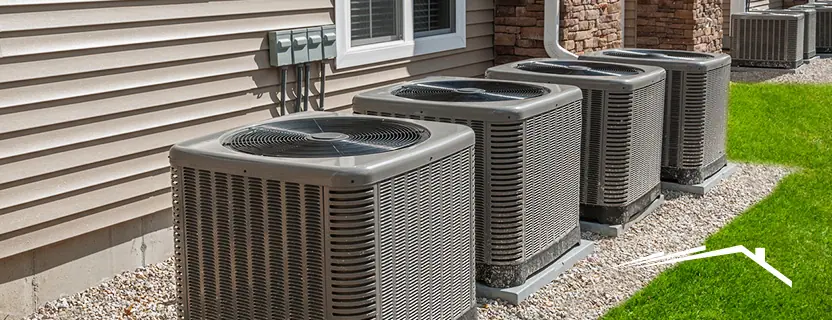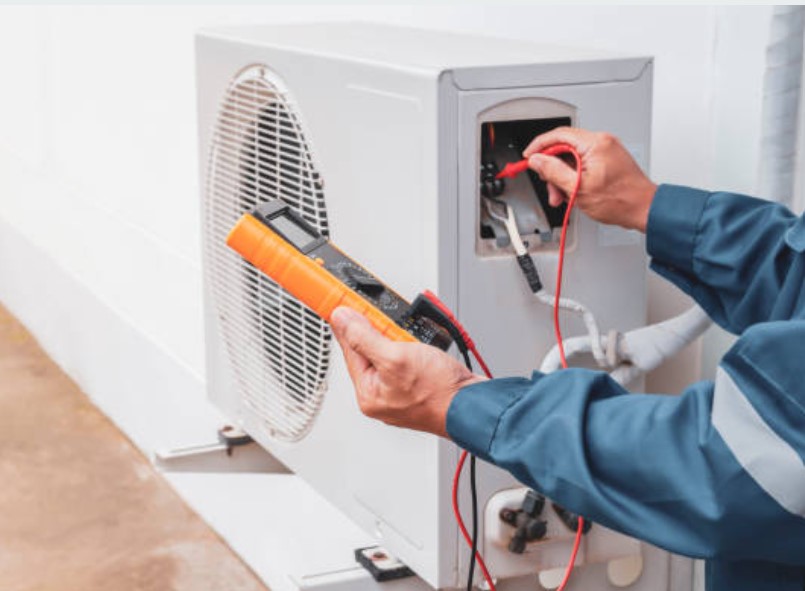Exactly How a Heatpump and Heating System Collaborate to Enhance Your Home's Heating Efficiency
Recognizing just how a warm pump and furnace collaborate is important for homeowners looking for effective heating remedies. Each system has its staminas, providing a well balanced method to home convenience. The warm pump excels in modest temperatures, while the heater provides quick warmth throughout extreme cold. This harmony not only reduces power expenses however additionally enhances the lifespan of both devices. What factors influence this cooperation, and exactly how can homeowners optimize their benefits?
Comprehending Warmth Pumps: Exactly How They Function
Numerous individuals might be unfamiliar with their inner operations, heat pumps play a necessary duty in contemporary home heating systems. These tools operate by transferring warm from one area to another, utilizing the principles of thermodynamics. In cooler months, a heatpump extracts heat from the outside air, ground, or water, and transfers it inside to warm up the home. On the other hand, throughout warmer months, it can reverse the process, functioning as an air conditioner by removing warm from inside to the outside.Heat pumps include an evaporator, expansion, compressor, and condenser valve. The refrigerant within the system takes in warm as it evaporates at reduced temperature levels and stress. The compressor then raises the stress and temperature level of the cooling agent, permitting it to launch warmth as it condenses. This reliable procedure can greatly reduce energy intake contrasted to typical home heating approaches, making heatpump a sustainable selection for environment control in homes.
The Duty of Heating Systems in Home Home Heating
Heating systems play a crucial duty in home heating by supplying a dependable source of heat throughout the cooler months. They run by creating warmth with combustion or electric resistance, dispersing it throughout the home by means of ducts or radiant systems. The efficiency of a furnace is often measured by its Annual Fuel Utilization Performance (AFUE) rating, which indicates just how properly the device converts fuel into heat.Furnaces can utilize numerous power sources, including all-natural gas, propane, oil, or electricity, enabling property owners to pick the most ideal choice for their demands. Unlike heatpump, which may have a hard time in extreme chilly, furnaces preserve regular performance, ensuring that indoor temperature levels remain comfy despite outside conditions. Furthermore, modern-day furnaces usually come furnished with advanced innovation, such as variable-speed blowers and smart thermostats, boosting their efficiency and responsiveness. This adaptability makes heaters an important part in all-encompassing home heating methods.

Benefits of Making Use Of Both Equipments With Each Other
Integrating the strengths of both heaters and heatpump can cause a much more efficient and reliable home heating solution. Making use of both systems enables property owners to take advantage of the heatpump's energy efficiency during milder temperature levels while depending on the heater for more extreme cold problems. This dual approach can substantially lower energy prices, as heatpump consume much less electrical energy than conventional home heating techniques when temperature levels are moderate.Additionally, utilizing both systems together can enhance convenience degrees in the home. Warmth pumps can supply consistent, also heating, while heaters can rapidly elevate ambient temperatures when required. Moreover, the integration of both systems can prolong the life-span of devices by lowering deterioration on each device, as they share the workload. Eventually, homeowners can take pleasure in a well balanced, affordable home heating remedy that adjusts effortlessly to varying weather condition problems, ensuring a warm and welcoming home throughout the winter season.
Exactly How Warm Pumps and Furnaces Enhance Each Other
When home owners integrate heatpump and furnaces, they produce a complementary furnace that optimizes efficiency and comfort. Heatpump run by transferring heat from the outside air or ground, making them highly efficient in moderate climates. They excel during milder temperatures, supplying economical home heating. Alternatively, heaters create warmth via burning or electrical resistance, providing strong, immediate warmth during severe chilly conditions.The combination of these two systems allows for dynamic adjustments based on temperature level variations. Throughout warmer months or milder wintertime days, the warm pump can take the lead, saving energy and reducing prices. As temperature levels decrease, the furnace can seamlessly engage, making certain regular warmth throughout the home. This synergy not just enhances energy usage however likewise enhances the life-span of both systems, as each device operates within its optimal performance range. With each other, they develop a well balanced setting that adjusts to varying climate demands.
Maximizing Performance: Tips for Homeowners
House owners can enhance their home heating effectiveness through numerous practical strategies. Developing a regular upkeep routine, integrating wise thermostat technology, and applying efficient insulation and sealing options are essential actions. These steps not just improve convenience but additionally decrease power costs.
Routine Maintenance Arrange
To assure maximum home heating efficiency, developing a normal maintenance timetable is vital for any kind of home. Property owners need to prioritize regular evaluations of both heatpump and furnaces to establish peak efficiency. This includes altering air filters each to 3 months, as blocked filters can substantially reduce effectiveness. In addition, scheduling expert upkeep at the very least yearly enables professionals to identify and resolve possible problems prior to they rise. Property owners ought to also clean up the heatpump's outdoor unit to stop particles buildup that can prevent airflow. By adhering to a routine upkeep timetable, homeowners not only improve their heating systems' performance yet additionally extend their lifespan, causing better convenience and lowered power prices throughout the cooler months.
Smart Thermostat Assimilation
Incorporating a clever thermostat into a home heating unit can significantly enhance power performance, particularly as it enables specific control over temperature level settings. These devices can find out the home owner's routine and preferences, instantly readjusting the temperature to optimize convenience while lessening energy usage. They can lower home heating during times when the home is vacant, lowering unnecessary intake. Several smart thermostats also supply real-time energy use data, enabling homeowners to make educated decisions regarding their heating routines. Additionally, remote gain access to via mobile phone applications enables customers to adjust setups from anywhere, ensuring the home is warm upon return. Generally, smart thermostat integration not just improves comfort yet considerably adds to power savings and effectiveness.
Insulation and Securing Solutions
Smart thermostats play a vital role in energy effectiveness, yet their effectiveness can be considerably boosted by proper insulation and sealing remedies. Homeowners ought to focus on shielding floorings, attic rooms, and walls to lessen warm loss. High-quality insulation materials, such as spray foam or fiberglass, can significantly enhance thermal resistance. In addition, sealing spaces around doors, home windows, and air ducts prevents cold air infiltration and warm getaway. Weatherstripping and caulking are reliable approaches for dealing with these leaks - heat pump installation ooltewah tn. Normal inspections for air leakages, together with using blower door tests, can assist determine problem areas. By purchasing insulation and sealing, property owners can optimize the efficiency of their heating unit, eventually bring about minimized power usage and lower energy costs
Typical Myths About Warmth Pumps and Furnaces
What misunderstandings surround warmth pumps and heaters? Lots of individuals mistakenly think that warm pumps are inefficient in colder link environments. In truth, contemporary heatpump are designed to run successfully also in low temperatures, giving trusted home heating throughout wintertime. Another common misconception is that heating systems are always more reliable than heatpump. Nevertheless, this relies on the specific power resources and performance rankings of the units in inquiry. Some may additionally think that making use of both systems concurrently is unneeded, however actually, this combination can maximize home heating effectiveness, specifically during severe climate condition. Additionally, people frequently think that heatpump call for continuous upkeep, when in reality, they have comparable maintenance requires to traditional heating unit. By disproving these myths, home owners can make more educated choices regarding their home heating options, eventually bring about improved comfort and power performance in their homes.
Maintenance Considerations for Combined Solutions

Frequently Asked Concerns
Can Warmth Pumps Job Efficiently in Incredibly Cold Climates?
Heatpump can struggle in very cool environments due to minimized performance and heat extraction restrictions. Nevertheless, advancements in innovation have actually led to versions designed for better performance in such conditions, boosting their stability in harsh environments.
How Much Time Do Heat Pumps and Furnaces Generally Last?
Warm pumps usually last 15 to two decades, while furnaces have a life expectancy of 15 to thirty years. Normal upkeep can expand their long life, making certain efficient operation and decreasing the need for premature replacements.

What Is the Ordinary Price of Putting Up Both Solutions?
The ordinary cost of mounting both a heat pump and a furnace normally ranges between $5,000 to $10,000 - heat pump service. Factors affecting this cost include system dimension, installation complexity, and local labor rates
Are There Tax Obligation Motivations for Using Energy-Efficient Home Heating Solutions?
Several site web property owners ask about tax obligation rewards for energy-efficient home heating systems. Different government and state programs commonly supply rebates or credits, urging the fostering of lasting modern technologies to reduce power usage and promote ecological responsibility.
How Do I Select the Right Dimension Warmth Pump and Furnace?
Choosing the right size warm pump and furnace entails calculating the home's square video, considering insulation high quality, and evaluating regional climate. Consulting an expert can ensure suitable system efficiency and power performance based upon certain requirements. heat pump installation ooltewah tn. Comprehending exactly how a warm pump and furnace work with each other is important for house owners looking for effective heating options. In cooler months, a warmth pump essences warm from the outside air, ground, or water, and transfers it inside to heat the living area. When property owners integrate warmth pumps and heaters, they create a corresponding home heating system that makes best use of performance and convenience. Warmth pumps run by transferring heat from the outdoors air or ground, making them extremely efficient in moderate environments. Warm pumps can struggle in exceptionally chilly environments due to reduced efficiency and warm extraction constraints